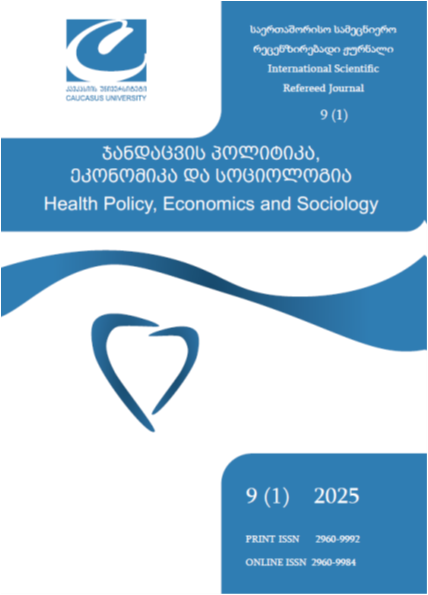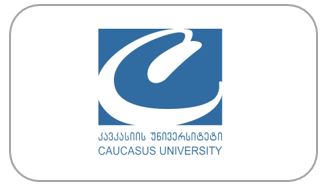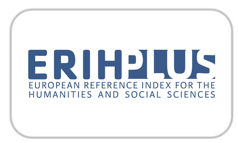შაკიკთან დაკავშირებული სტიგმა და მისი კავშირი შეზღუდულ შესაძლებლობასთან და ცხოვრების ხარისხთან
DOI:
https://doi.org/10.52340/healthecosoc.2025.09.01.04საკვანძო სიტყვები:
მკურნალობის ხარვეზები, ცხოვრების ხარისხი, შეზღუდული შესაძლებლობა, შაკიკი, სტიგმაანოტაცია
შესავალი: შაკიკი ნევროლოგიური მდგომარეობა, რომელიც მნიშვნელოვან გავლენას ახდენს ფიზიკურ, ემოციურ და სოციალურ კეთილდღეობაზე. მცდარი წარმოდგენები, რომგორიცაა შაკიკი წარმოადგენსუმნიშვნელო თავის ტკივილის ან სისუსტის ეპიზოდებს,, ხელს უწყობს სტიგმას, რაც იწვევს არასწორ დიაგნოზს, არაადეკვატურ მკურნალობას და ცხოვრების ცუდ ხარისხს. მიმოხილვის მიზანია შაკიკის გავლენა შეზღუდულ შესაძლებლობაზე, ცხოვრების ხარისხზე და მკურნალობის ხელმისაწვდომობაზე. მეთოდოლოგია: ჩატარდა ლიტერატურის ყოვლისმომცველი მიმოხილვა, რომელშიც გაანალიზდა რეცენზირებული კვლევები შაკიკთან დაკავშირებული სტიგმის გავრცელებისა და ფორმების შესახებ, მისი გავლენა პაციენტების ცხოვრებაზე და სტიგმის შემცირების არსებული სტრატეგიები. განსაკუთრებული ყურადღება დაეთმო მკურნალობის ხარვეზებსა და გამოწვევებს შეზღუდული რესურსების პირობებში. შედეგები: შაკიკთან დაკავშირებული სტიგმა მნიშვნელოვნად ამცირებს ცხოვრების ხარისხს, რაც იწვევს დაბალ თვითშეფასებას, შფოთვას და დეპრესიას. ბევრი პაციენტი ყოყმანობს გაამჟღავნოს თავისი მდგომარეობა. მიუხედავად იმისა, რომ გვაქვს მიღწევები მკურნალობაში, ხელმისაწვდომობა შეზღუდულია გარკვეულ პოპულაციებში, რაც კიდევ უფრო ამძაფრებს სტიგმას და დაავადების ტვირთს. დასკვნა: შაკიკთან დაკავშირებული სტიგმის შემცირება მოითხოვს საზოგადოების ინფორმირებულობას, სამუშაო ადგილზე მხარდაჭერას და ზრუნვაზე ხელმისაწვდომობის გაუმჯობესებას. მცდარი წარმოდგენების მოგვარებით და დამხმარე გარემოს ხელშეწყობით, შაკიკით დაავადებული ადამიანების საერთო კეთილდღეობა და მკურნალობის შედეგები შეიძლება მნიშვნელოვნად გაუმჯობესდეს.
წყაროები
American Migraine Foundation State of Union Recap (2024) Discussing (CGRP) -targeting therapies for preventive treatment, and why this update is important to patients and providers. https://americanmigrainefoundation.org/resource-library/2024-sotu/
Colleen Doherty MD (2024, September 27) What is Complicated Migraine. https://www.verywellhealth.com/complicated-migraine-5219753
Cohen, F., Brooks, CV., Sun, D., Buse, DC., Reed, ML., Fanning, KM., & Lipton, RB. (2024). Prevalence and burden of migraine in the United States: A systematic review. Headache, 64(5), 516–532. https://doi.org/10.1111/head.14709
Jeffrey, S. FDA approves first device to treat migraine pain. Medscape Medical News. December 13, 2013
Parikh, SK., Kempner, J., Young, WB. Stigma and Migraine: Developing Effective Interventions. Current Pain Headache Rep 25, 75 (2021). https://link.springer.com/article/10.1007/s11916-021-00982-z
Pescosolido, BA., Martin, JK. (2015). The Stigma Complex. Annual review of sociology, 41, 87–116. https://pmc.ncbi.nlm.nih.gov/articles/PMC4737963/
Seng, EK., Martin, PR., Houle, TT. (2022). Lifestyle factors and migraine. The Lancet. Neurology, 21(10), 911–921. https://doi.org/10.1016/S1474-4422(22)00211-3
Shapiro, RE., Nicholson, RA., Seng, EK., et al. (2024). Migraine-Related Stigma and Its Relationship to Disability, Interictal Burden, and Quality of Life: Results of the OVERCOME (US) Study. Neurology. 102(3) https://pmc.ncbi.nlm.nih.gov/articles/PMC11097761/
Varkey, E., Cider, A., Carlsson, J., Linde, M. (2011). Exercise as migraine prophylaxis: A randomizedstudy using relaxation and topiramate as controls. Cephalalgia. 31(14):1428-1438. https://pmc.ncbi.nlm.nih.gov/articles/PMC3236524/














